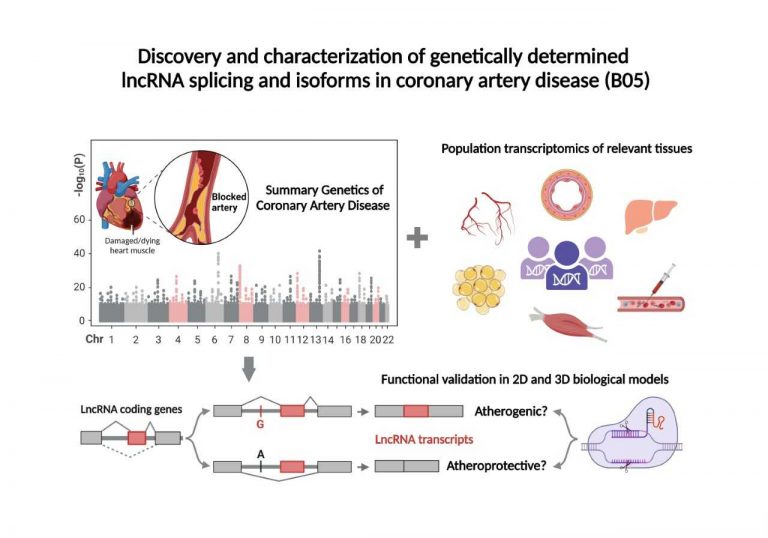

Research Details
-
Project Leaders
Prof. Dr. Reinier Boon
Institute of Cardiovascular Regeneration
Goethe University Frankfurt
boon@med.uni-frankfurt.de
Prof. Dr. Lars Mägdefessel
Department of Vascular and Endovascular Surgery
TUM University Hospital (Klinikum rechts der Isar), TUM
lars.maegdefessel@tum.de -
Research Staff
Dr. Francesca Fasolo (Postdoc)
francesca.fasolo@tum.de
Katrin Hanft (PhD student)
katrin.hanft@tum.de
Caroline Kohnle (PhD student)
kohnle@med.uni-frankfurt.de
Jessica Pauli (PhD Student)
jessica.pauli@tum.de
Noelia Kupatt (PhD student)
noeliabellonquinones@gmail.com
During the first funding period, we identified several non-coding RNAs (mainly lncRNAs) of importance in vascular aging and aortic aneurysm formation which are in detail summarized in the sections below. Our project for the second funding period is aimed at establishing a functional role for the long non-coding RNA linc-PINT (p53-induced transcript) in vascular aging, remodelling and the development of abdominal aortic aneurysms (AAAs). We identified linc-PINT in a multi-layered RNA screen, using single cell, bulk, and spatial transcriptomics of different cell culture and preclinical in vivo models (mouse and mini-pig), as well as diseased human tissue specimens from patients undergoing elective open aortic aneurysm repair. Taken together these RNA profiling experiments revealed its significant upregulation in disease states and a distinct expression pattern in structural cells, such as endothelial cells and smooth muscle cells. Targeted inhibition of linc-PINT in vitro, using siRNAs and gapmeRs, identified a prominent role in cell migration and survival. Here, further experiments using an organ-on-a-chip based system (aorta-on-a-chip) with patient-derived endothelial and smooth muscle cells in 3D co-culture will allow us to evaluate the pathological relevance of linc-PINT deregulation. Furthermore, using RNA pulldown, RNA immunoprecipitation and sequencing approaches, the interaction partners of linc-PINT and regulated pathways in both cell types will be mapped. For in vivo experiments, a linc-Pint knockout mouse model is available in the Boon lab, and will be exposed to established models of vascular injury and aneurysm formation. A potential therapeutic effect will finally be tested in a translational large animal model (aneurysm induction in LDLR-deficient Yucatan mini-pigs). Overall, we are convinced that this project will shed light on the contribution and therapeutic potential of lncRNAs in general and linc-PINT in particular in vascular aging, remodelling and aneurysm formation.





